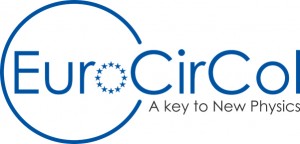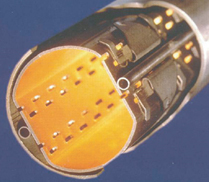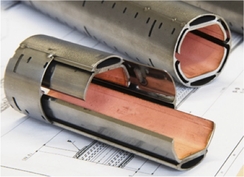
KIT IBPT hosted FCC / EuroCirCol meeting
- Date: October 2018
-
KIT IBPT hosted on October 17 and 18, 2018, the 4th EuroCirCol meeting. Further information on the meeting can be found here: Link.
EuroCirCol is a conceptual design study for a post-LHC research infrastructure based on an energy-frontier 100 TeV circular hadron collider. The FCC H2020 Project EuroCirCol – The European Circular Energy-Frontier Collider Study is a Research and Innovation Action project submitted to call H2020-INFRADEV-1-2014-1 and receives funding from the European Union’s H2020 Framework Programme under grant agreement no. 654305.


In the FCC, significant synchrotron radiation power will be generated and will impact on the cryogenic beam vacuum chamber of the 100 km circular accelerator, thus influencing the 100 TeV beam’s stability and lifetime. Therefore an important part of the EuroCirCol study includes the design and construction of a complete cryogenic beam pipe system as a prototype.
The expected synchrotron radiation spectrum of FCC is a close match to that provided by the KIT light source, making it an ideal choice to test this system at Karlsruhe Institute of Technology (KIT), Germany.
Today, no quantitative performance model is available for a 100 TeV beam, that can describe the vacuum dynamics in presence of high-power synchrotron radiation and the anticipated beam power. Calculations enter a new frequency domain, because of the intrinsically low revolution frequency due to the dimension of the 100 km ring circumference. The dynamic behaviour of the vacuum surrounding the high energy particle beam, the need to understand electron and ion cloud effects and to develop an “Ansatz” for feedback and impedance mitigation measures, are pioneering studies.
First experimental tests have been performed at the storage ring KARA (Karlsruhe Research Accelerator), operated by IBPT at the KIT light source, to derive or verify models. In order to avoid instabilities of the accelerated beams and to reduce the beam heat load to the vacuum chamber, this must be designed to keep the ultrahigh vacuum while maintaining the impedance as well as the photon and electron desorption of the gas molecules on the surface of the vacuum chamber walls to small values. To address these challenges, the photon and electron desorption is studied by illuminating different vacuum chambers with a realistic energy spectrum at the KIT light source in the framework of this FCC study.
For further information see EuroCirCol website: Link.
